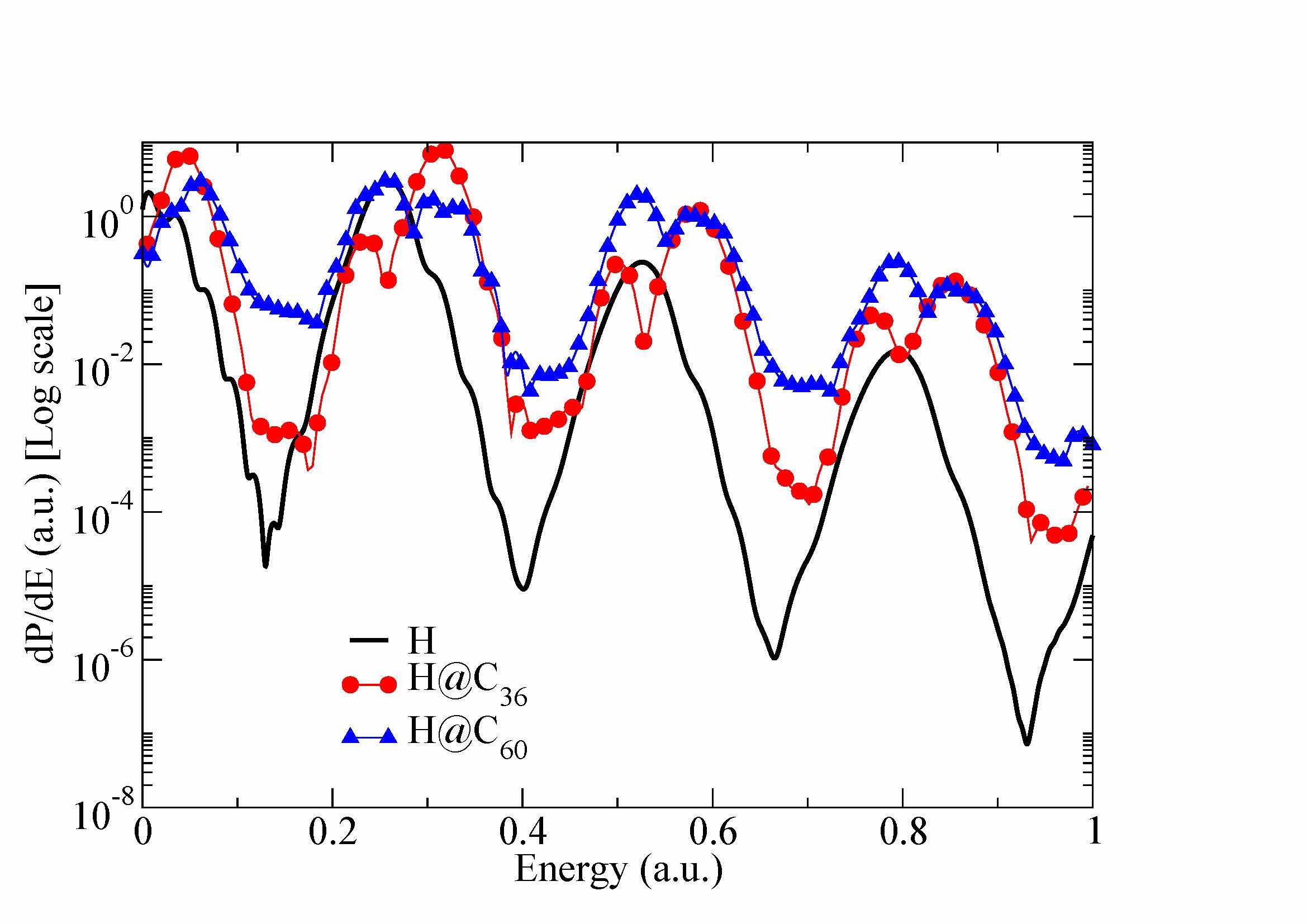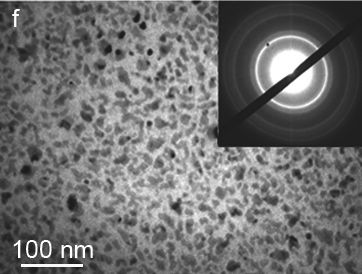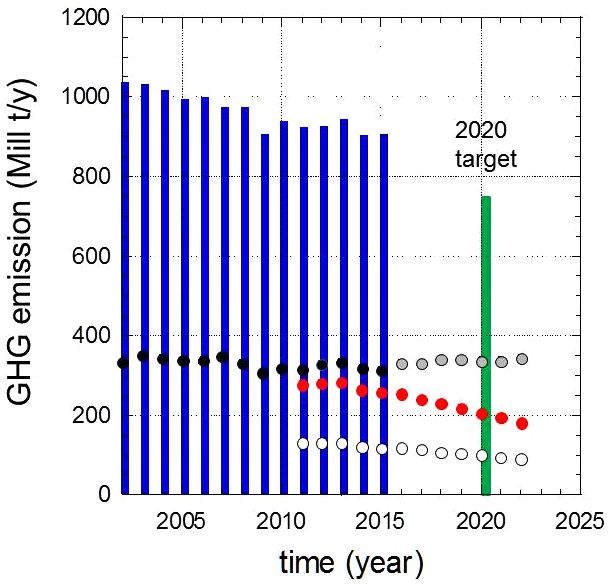News
EPJ D Highlight - Ionisation mechanisms of captive atoms struck by light matter
- Details
- Published on 01 March 2017

Physicists elucidate the effects of light rays falling onto hydrogen atoms trapped in a carbon atom cage
Light interacting with hydrogen atoms enclosed in hollow cages composed of carbon atoms - referred to as fullerene material - produces ionisation. This phenomenon, which has been the subject of intense theoretical scrutiny, is particularly interesting because the light rays can have dramatic effects in inducing small external energy potentials. Specifically, they alter the structural and dynamic properties of the atoms confined within the fullerene molecule. Ana Frapiccini from the CONICET research centre at the Universidad Nacional del Sur, in Bahía Blanca, Argentina, and colleagues have just published a study in EPJ D explaining the theory behind the ionisation. Applications of this process include drug delivery, quantum computation, photovoltaics and hydrogen storage.
EPJ E Review - Water and ionic liquids. Two very different solvents, two intriguing behaviours when nanoconfined
- Details
- Published on 28 February 2017
Confinement of liquids at the nanoscale gives rise to intriguing new chemical and physical behaviours and structures. Scientists are studying the phenomenon also because of its relevance to molecular biology (permeability of ion channels and protein stability), chemical engineering (nano-fluidic devices and molecular sieves) and geology (transport through porous rocks).
EPJ Plus Focus Point - Plants for food, energy and sustainability
- Details
- Published on 27 February 2017
Guest Editors: G. Alimonti, S. Johansson and L. Mariani
After a very long hunting-gathering period, the first agricultural civilizations were born at the end of the last ice age. Agricultural practices generated a surplus of food, which was a prerequisite for the birth of modern societies. During the twentieth century, the modern agriculture was developed and now yields more food than ever before: less than 20% of our global population works to provide the whole mankind with food.
As environmental problems and resource constraints are arising, we now turn to agriculture in the hope for solutions regarding future sustainability. Could agriculture provide us with both food and fuel? Could we contribute to climate change mitigation by letting plants exploit the carbon dioxide that has been accumulated in the atmosphere? There are many promises, and we know that plants are our ultimate companions in life. However, more systemic methods are required to cope with multi-functionality and living systems so that we do not end up causing new problems as we try to cope with those already there.
This EPJ Plus Focus Point addresses the present and historical development of agriculture, perspectives of plant exploitation for food and energy production in a logic of social, economic and environmental sustainability. The articles are freely accessible until 20 April. For further information read the Editorial
EPJ Plus Focus Point - Rewriting Nuclear Physics textbooks: 30 years with radioactive ion beam physics
- Details
- Published on 27 February 2017
Guest editors: N. Alamanos, C. Bertulani, A. Bracco, A. Bonaccorso, D. Brink and G. Casini
This collection of articles contains the lectures given at the Summer School "Re-writing Nuclear Physics textbooks: 30 years of radioactive ion beam physics`` which was held at the INFN Sezione di Pisa and Department of Physics of the University of Pisa during the week 20-24 July 2015.
The school celebrated thirty years since the publication of the first papers (I. Tanihata et al., Phys. Rev. Lett. 55, (1985) 2676 and P.G. Hansen, B. Jonson, Europhys. Lett. 4, (1987) 409) in which radioactive ion beams (RIBs) were used to study properties of atomic nuclei. The school consisted of twelve lectures published here and freely accessible until 24 April 2017. Each lecture covers a topic contained in a standard Nuclear Physics textbook extended to show how our understanding has deeply changed due to the experience accumulated with RIB physic. The collection is directed mainly to third and fourth year undergraduate students but it could be seen also as an update for teachers of basic Nuclear Physics courses.
For further information read the Editorial here.
EPJ H Highlight - Historical account of how donut-shaped fusion plasmas managed to decrease adverse turbulence
- Details
- Published on 20 February 2017

Achieving fusion has become more realistic since plasma flow was identified as regulating turbulence in the 1980s
Fusion research has been dominated by the search for a suitable way of ensuring confinement as part of the research into using fusion to generate energy. In a recent paper published in EPJ H, Fritz Wagner from the Max Planck Institute for Plasma Physics in Germany, gives a historical perspective outlining how our gradual understanding of improved confinement regimes for what are referred to as toroidal fusion plasmas –- confined in a donut shape using strong magnetic fields-- have developed since the 1980s. He explains the extent to which physicists’ understanding of the mechanisms governing turbulent transport in such high-temperature plasmas has been critical in improving the advances towards harvesting fusion energy.
EPJ Plus Highlight - Smart multi-layered magnetic material acts as an electric switch
- Details
- Published on 20 February 2017

New study reveals characteristic of islands of magnetic metals between vacuum gaps, displaying tunnelling electric current
The nanometric-size islands of magnetic metal sporadically spread between vacuum gaps display unique conductive properties under a magnetic field. In a recent study published in EPJ Plus, Anatoliy Chornous from Sumy State University in Ukraine and colleagues found that the vacuum gaps impede the direct magnetic alignment between the adjacent islands - which depends on the external magnetic field - while allowing electron tunneling between them. Such externally controlled conducting behaviour opens the door for applications in electronics with magnetic field sensors - which are used to read data on hard disk drives - biosensors and microelectromechanical systems (MEMS), as well as in spintronics with magnetic devices used to increase memory density.
EPJ AP Highlight - Training for the first international nano-car race
- Details
- Published on 08 February 2017

The first international nano-car race will be held in Toulouse, France, during spring 2017, with the participation of six international teams. The training session of the Dresden Team is reported here.
To prepare their participation, Eisenhut et al. exercised on the Toulouse LT-UHV 4-STM reconfigured for the race with 4 independent controllers (one per scanning tunneling microscope (STM)). Their findings are reported in EPJ AP.
EPJ D Highlight - Novel plasma jet offshoot phenomenon explains blue atmospheric jets
- Details
- Published on 08 February 2017

Russian physicists identify mysterious right-angle side-jet occurring off the plasma arc in air at ambient pressure conditions
Ionised matter, like plasma, still holds secrets. Physicists working with plasma jets, made of a stream of ionised matter, have just discovered a new phenomenon. Indeed, Eduard Sosnin from the Institute of High Current Electronics, Russian Academy of Sciences in Tomsk, Russia, and colleagues found a new type of discharge phenomenon in an atmospheric pressure plasma. It has been dubbed apokamp—from the Greek words for ‘off’ and ‘bend’, because it appears at a perpendicular angle to where plasma jets bend. Their findings have been recently published in EPJ D and are particularly relevant for the development of novel applications in medicine, health care and materials processing because they involve air at normal atmospheric pressure, which would make it cheaper than applications in inert gases or nitrogen.
EPJ E Highlight - Nanoparticles hitchhiking their way along strands of hair
- Details
- Published on 26 January 2017

Massaging hair can help more quickly deliver nanoparticle-based treatment to the roots
In shampoo ads, hair always looks like a shiny, smooth surface. But for physicists peering into microscopes, the hair surface looks much more rugged, as it is made of saw-tooth, ratchet-like scales. In a new theoretical study published in EPJ E, Matthias Radtke and Roland Netz have demonstrated that massaging hair can help to apply drug treatment - encapsulated in nanoparticles trapped in the channels formed around individual hairs - to the hair roots. This is because the oscillatory movement of the massaging directs the way these particles are transported.
EPJ Plus Highlight - 100% renewable energy sources require overcapacity
- Details
- Published on 20 January 2017

To switch electricity supply from nuclear to wind and solar power is not so simple
Germany decided to go nuclear-free by 2022. A CO2-emission-free electricity supply system based on intermittent sources, such as wind and solar - or photovoltaic (PV) - power could replace nuclear power. However, these sources depend on the weather conditions. In a new study published in EPJ Plus, Fritz Wagner from the Max Planck Institute for Plasma Physics in Germany analysed weather conditions using 2010, 2012, 2013 and 2015 data derived from the electricity supply system itself, instead of relying on meteorological data. By scaling existing data up to a 100% supply from intermittent renewable energy sources, the author demonstrates that an average 325 GW wind and PV power are required to meet the 100% renewable energy target. This study shows the complexity of replacing the present primary energy supply with electricity from intermittent renewable sources, which would inevitably need to be supplemented by other forms of CO2-free energy production.




